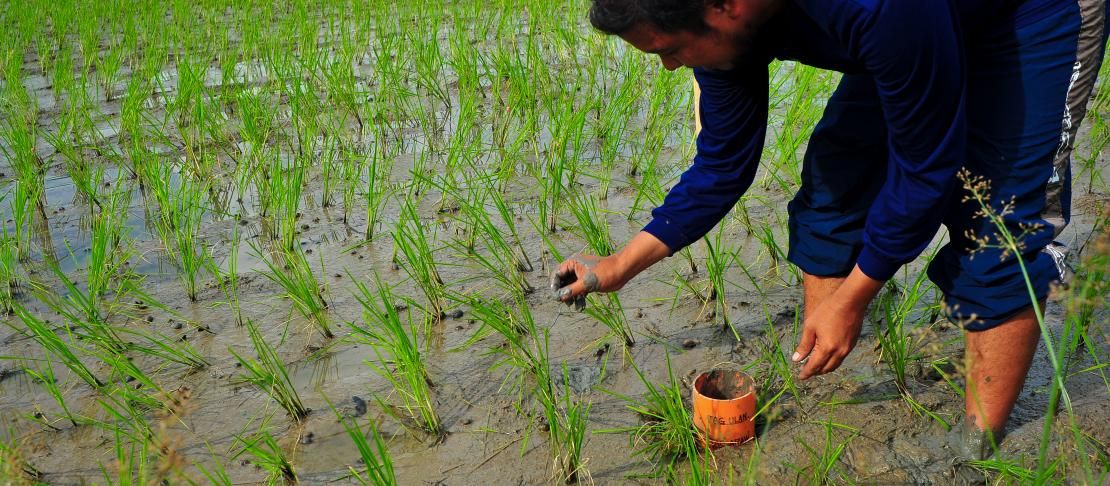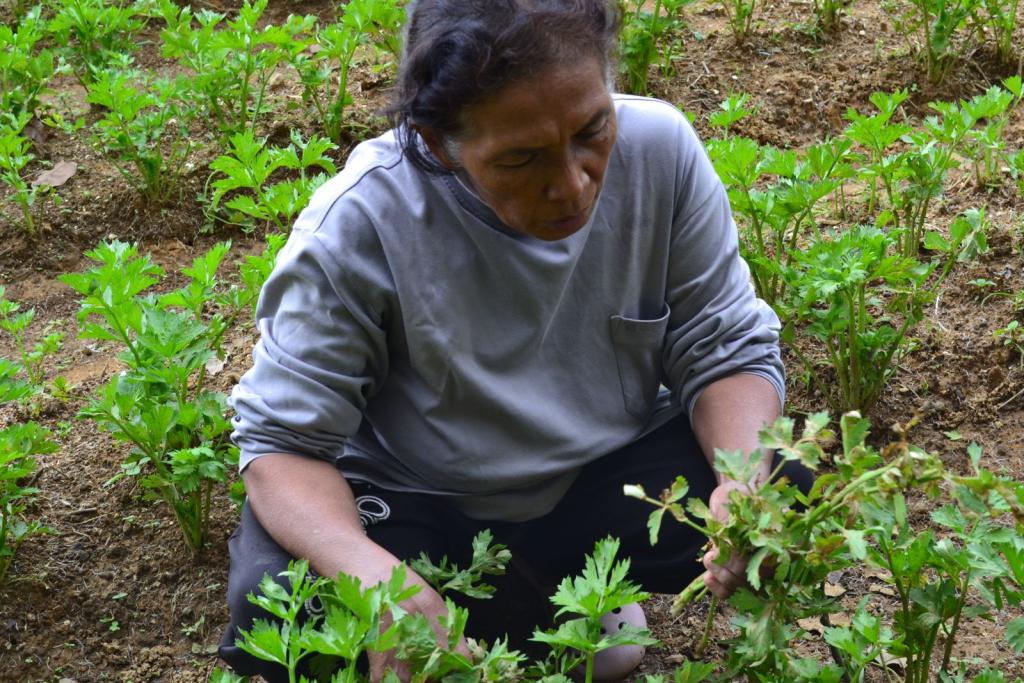Climate change and agriculture: Is it a gloom and doom scenario?

Climate change mostly negatively affects farmers and peoples, however some options can increase food security while providing adaptation and mitigation options.
Climate change is usually seen in light of extreme events and people. Take for example, Super Typhoon Haiyan, one of the strongest typhoons ever to hit land, cost the Philippines more than US$ 12 billion in damages. More than 6000 deaths were reported then.
But what does climate change mean for agriculture and food security?
Agriculture is largely dependent on the climate, as plants need the sun and water, aside from nutrients, to yield fruits and other products people use. Even the much dreaded typhoons are an important part in the life cycles of crops in many parts of Southeast Asia. The typhoons and tropical depressions in the Pacific during the months of May to July bring the rains that allow farmers to start planting rice.
Many people still depend on agriculture for their livelihoods, especially in Southeast Asia (SEA). In 2009, around 115 million ha of land, or just over 25% of the total land area in SEA, were devoted to agricultural production, according to the Asian Development Bank. More than half of the Southeast Asian population live in rural areas and depend on agriculture for their food and income.
Many think climate change will be the doom of Southeast Asian agriculture – and it might be so. Some of the impacts of climate change may seem discouraging at first glance.
Doom and gloom?
The Intergovernmental Panel on Climate Change (IPCC) released the Fifth Assessment Report (AR5) last 2014. Its Working Group 2 assessed the vulnerability of different systems to climate change, the negative and positive impacts of climate change, and adaptation options.
AR5 reports with high confidence that climate change has impacts on crop yields across several regions in the world. Positive impacts may be observed in the more temperate countries, however tropical regions, such as SEA, experience the stronger negative impacts of climate change.
Higher temperatures may lead to shorter growing periods and lower rice yields, most models show. Changes in the life cycles, growth rates, and distributions of plants also happen because of climate change.
A farmer from the municipality of Lantapan in the southern Philippines notices that her celery wilts with heavy rains. Climate change can also affect other crops in different ways. Photo: World Agroforestry Centre/Edith Mayormita
For instance, farmers in the municipality of Lantapan in the southern Philippines have observed that their corn crops would rot because these are heavily affected by rains. “The farms nearby harvested their maize but did not get much because [the crop] were heavily affected by the rains,” says Emalyn Mal-ing, a smallholding farmer from Lantapan.
Livestock in tropical areas are also sensitive to temperature, water and feed availability. Rises in sea level temperatures force key fish species to move towards the poles, and result in the decrease in subtropical species. Small-scale coastal fisheries in tropical countries would then get smaller catches and lower incomes.
Aside from the direct effects of climate change, climate change may aggravate the current problems farmers are already experiencing, such as low yields due to poor crop establishment, pests and diseases, abiotic stresses, and postharvest losses.
The impacts are not just on farmers…
“Clearly, climate change does not only affect natural ecosystems but also the lives of people,” says Dr. Rodel Lasco, the lead author of the Asia chapter of the IPCC Working Group 2. Households and communities have to deal with the consequences of climate change as well.
People from around the world also rely on agricultural produce from SEA. According to the Food and Agriculture Organization (FAO), 31% of global rice harvested comes from SEA. Rice importing countries are vulnerable to any fluctuation in rice supply from rice exporting countries.
In addition, usually tropical areas that are highly exposed to climate change, like SEA, are also areas that currently have low food security. “Declines in agricultural productivity owing to climate change will mean greater food insecurity for the growing population,” says Dr. Lasco.
There is still hope…
Does this mean people should lose hope? Measures undertaken in different countries show that there is still a chance to adapt to, and mitigate climate change.
The CGIAR Research Program on Climate Change, Agriculture and Food Security (CCAFS) is promoting what the FAO calls climate-smart agriculture (CSA) across the world. CSA includes practices that will attain food security, adaptation and mitigation of climate change.
One example is shifting the planting dates to suit the changes in climate. Techniques, such as dry sowing and seed priming, and improved climate forecasts also help farmers to sow their crops early on.
Farmers are also using other crop cultivars and species that can withstand the extremes and changes in the climate. For example, the International Rice Research Institute has developed rice varieties that can survive being submerged under water for two weeks. Five million farmers in several Asian countries are now using these varieties.
Introducing diversity through replacing the practice of monocultures with intercropping and agroforestry (integrating trees on farms) has also increased the incomes of smallholder farmers.
CSA can be made more effective through collective efforts among farmers and other stakeholders in a community. Exchange visits and farmer networks on adaptation technologies could increase knowledge sharing between farmers and link them to scientists and technicians who can also offer advice and guidance. Governments could develop policies that would support the adoption of CSA practices.
CCAFS promotes the Climate-Smart Village (CSV) model for this integrated and participatory approach at the community and its surrounding landscape. Several CSVs have been established in Vietnam, Laos, Cambodia and Philippines.
Climate change indeed provides both risks and opportunities. People should look past the storms and look towards practices and technologies that could help cushion them from the impacts of climate change and develop our world more sustainably.
Read more:
- CCAFS-SEA kicks off first media workshop on how to report about climate change with impact
- Brainstorming with the media on climate change in Vietnam
- Laotian media professionals trained in climate change
Amy Cruz is the junior communications specialist for the World Agroforestry Centre Philippines. She is also a communication consultant with the CCAFS SEA program.




